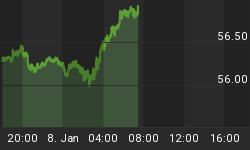When Dexia was nationalized I said the clock was now ticking. Counterparty risk was the new threat to the global economy. When confidence is gone the system simply shuts down. What does that mean though? How do you measure confidence or lack thereof?
Simply look at where cash is going. Recently released data shows a record jump in the foreign reverse repurchase agreement balance held at the Federal Reserve (first reported by Zero Hedge on November 3).
In just one week a whopping $43.2 billion in liquidity was removed from the system and deposited at the Fed. That is a 53% jump in the total balance from $81.3 billion to $124.5 billion. The last time such a move happened was the week of September 24, 2008 when $44 billion was removed. At the height of the 2008 financial crisis the total balance held at the Fed reached $107.8 billion.
In non credit language, simply said in just one week $43.2 billion in capital that was used for bank to bank lending is gone. That capital has been diverted from lending to those financial institutions deemed too much of a credit risk to the safety of cash at the Federal Reserve. Additional capital has also been diverted to the ECB. Institutions depend on access to these short term lending facilities for their very survival. As those facilities disappear the risk of systemic failure rises.
I have shown countless charts with divergences between various asset classes and the SPX. The chart below though very well is a self fulfilling prophecy. It shows the fall in confidence as measured by the reduction in capital available for interbank lending. It is not a question of who is right. Rather it shows historically when liquidity is quickly removed from the system what happens to the global economy as measured by equity prices.

This drop in confidence, rise systemic risk is not isolated to balances at the Federal Reserve. The treasury yield curve is also confirming this sentiment change.

Clearly the system is very vulnerable right now. The US is not isolated from the sovereign debt risk as witnessed by the bankruptcy of MF Global. The risks are very real. This data confirms that EU leaders failed in their attempt to calm the market through the expanded EFSF proposal.
The time for rumors truly has passed. Confidence is an asset, that once gone is not easily restored.
















